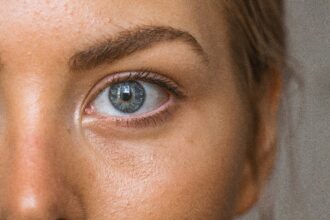Tepezza (teprotumumab-trbw) is a medication that has garnered significant medical attention, in recent years, particularly among those dealing with Thyroid Eye Disease (TED). TED is a rare, autoimmune condition that causes inflammation and swelling behind the eyes, leading to symptoms like bulging eyes, double vision, and discomfort. Tepezza, approved by the FDA in 2020, is the first and only medication specifically indicated to treat TED. For many patients, Tepezza represents a groundbreaking option, offering relief from symptoms that were previously difficult to manage. However, as with any new treatment, there are important considerations regarding its long-term benefits and risks. While Tepezza offers significant benefits, patients should be aware of potential side effects, including the risk of an allergic reaction, and seek immediate medical attention if symptoms arise.
Mass Tort America is here to help you navigate these considerations. We understand that deciding whether to proceed with Tepezza treatment can be challenging, especially when weighing the potential benefits against the risks. Our legal team is equipped to assist patients across the United States who have experienced adverse effects from Tepezza. Our Concierge Team is ready to coordinate every aspect of your case, ensuring you receive the support and information needed to make informed decisions about your health care professional and legal rights.
What Is Tepezza And How Does It Work?
Tepezza, also known by its generic name teprotumumab-trbw, is a targeted monoclonal antibody specifically designed to treat Thyroid Eye Disease (TED). It works by inhibiting the insulin-like growth factor-1 receptor (IGF-1R), which plays a key role in the inflammation and tissue remodeling seen in TED. By blocking this receptor, Tepezza helps reduce the inflammation and excessive growth of tissues behind the eyes, alleviating the primary symptoms of TED such as eye bulging, pain, and double vision.
The approval of Tepezza marked a significant advancement in the treatment of TED, a condition that had few effective treatment options prior to its introduction. Traditional therapies like corticosteroids and orbital decompression surgery often provided only partial relief or came with substantial side effects. Tepezza, as a first-of-its-kind medication, offers a non-surgical option that targets the underlying mechanisms of TED, providing patients with a treatment that addresses the root cause rather than just the symptoms. Some side effects may subside as the body adjusts to the treatment, and patients should discuss any persistent issues with their healthcare provider.
The Clinical Trials Behind Tepezza’s Approval
Tepezza’s approval was largely based on the results of two pivotal clinical trials that demonstrated its efficacy and safety in treating Thyroid Eye Disease. These trials involved hundreds of patients who were randomly assigned to receive either Tepezza or a placebo over a 24-week period. The primary endpoint of the trials was a reduction in proptosis, or eye bulging, which is a hallmark of TED. The results showed that a significant proportion of patients receiving Tepezza experienced a meaningful reduction in proptosis compared to those receiving the placebo.
Beyond the reduction in proptosis, the trials also evaluated other important outcomes, such as improvements in double vision, quality of life, and overall response rate. The data revealed that Tepezza not only helped reduce the physical symptoms of TED but also improved patients’ ability to perform daily activities and their overall well-being. These positive outcomes were instrumental in the FDA’s decision to approve Tepezza, making it the first approved treatment specifically for TED.
Understanding The Dosage And Administration Of Tepezza
Tepezza is administered as an intravenous (IV) infusion, typically given once every three weeks for a total of eight doses. Each infusion takes about 90 minutes, and the treatment course is completed over approximately five months. The dosing schedule is designed to provide sustained therapeutic levels of the drug in the body, allowing it to effectively reduce inflammation and tissue remodeling over time. Patients usually begin to see improvements in their symptoms after the first few Tepezza infusions only, with the full benefits often becoming apparent by the end of the treatment course.
It’s important for patients to receive Tepezza under the supervision of a healthcare provider experienced in treating Thyroid Eye Disease. Monitoring during the infusion process is crucial to manage any potential side effects and to ensure the treatment is working as expected. Patients should be monitored for infusion reactions during and after the administration of Tepezza, and any unusual symptoms should be reported to a healthcare provider immediately. While Tepezza has shown to be effective for many patients, individual responses can vary, and close follow-up is essential to optimize outcomes.
Potential Long-Term Outcomes Of Tepezza Treatment
The long-term outcomes of Tepezza treatment are an area of active research and interest within the medical community. While clinical trials have shown that the benefits of Tepezza can be sustained for several months after completing the treatment course, there is still much to learn about its effects over the longer term. Some patients have reported sustained relief from symptoms even years after treatment, suggesting that Tepezza may offer lasting benefits in managing TED. However, some patients may face significant side effects such as hearing impairment, which requires careful monitoring.
There are also questions about whether some patients may require retreatment or maintenance therapy over time. As more real-world data becomes available, it will be important to understand which patients are most likely to benefit from long-term treatment and which might be at risk for recurrence of symptoms. This ongoing research will help refine treatment protocols and ensure that patients receive the most effective care possible.
Comparing Tepezza With Other Thyroid Eye Disease Treatments
Tepezza is just one option in the broader landscape of treatments for Thyroid Eye Disease. Before its approval, the standard treatments included corticosteroids, which are potent anti-inflammatory drugs, and surgical interventions like orbital decompression, which involves removing bone from around the eye to relieve pressure. While these treatments can be effective, they also come with significant risks and side effects. Corticosteroids, for example, can cause weight gain, high blood pressure, and increased risk of infections, while surgery carries the risks associated with any invasive procedure.
Compared to these options, Tepezza offers a non-surgical alternative that specifically targets the disease’s underlying mechanisms. Its ability to reduce inflammation and tissue growth without the need for surgery is a major advantage for many patients. However, the choice of treatment should always be personalized, taking into account the severity of the disease, the patient’s overall health, and their response to previous treatments. In some cases, a combination of treatments may be necessary to achieve the best outcomes. Additionally, Tepezza can cause high blood sugar, particularly in patients with diabetes or prediabetes, so blood sugar levels should be monitored before and during treatment.
Patient Experiences: Success Stories And Challenges
The experiences of patients who have undergone Tepezza treatment provide valuable insights into the medication’s real-world impact. Many patients have reported significant improvements in their symptoms, describing how Tepezza has helped them regain their confidence and quality of life. For some, the reduction in eye bulging and muscle pain has allowed them to return to activities they had previously given up, such as driving, reading, or working. These success stories highlight the transformative potential of Tepezza for those living with TED. Some patients have also reported muscle spasms as a side effect, and it is important to discuss any such symptoms with a healthcare provider.
However, not all patient experiences have been positive. Some have encountered challenges with side effects or found that their symptoms did not improve as expected. Hearing loss, in particular, has been a notable issue for some patients, leading to concerns about the medication’s long-term safety. These mixed experiences underscore the importance of individualized care and the need for ongoing monitoring and support throughout the treatment process.
The Cost of Tepezza: Financial Considerations For Patients
Tepezza is an expensive medication, and the cost can be a significant consideration for patients and their families. The list price for a full course of treatment with tepezza can run into the hundreds of thousands of dollars, making it one of the more costly options for managing Thyroid Eye Disease. Insurance coverage is crucial for most patients to afford this treatment, but coverage can vary widely depending on the insurer and the specific policy. Some patients may face high out-of-pocket costs, even with insurance, which can be a barrier to accessing this potentially life-changing therapy.
For those struggling with the cost, there are financial assistance programs available through the manufacturer and various patient advocacy organizations. These programs can help reduce the financial burden, making Tepezza more accessible to a broader range of patients. It’s important for patients to explore all their options and work closely with their healthcare providers and insurance companies to navigate the financial aspects of their treatment.
Tepezza And The Impact On Mental Health
The physical symptoms of Thyroid Eye Disease can have a profound impact on a patient’s mental health. The disfigurement caused by eye bulging and the pain associated with TED can lead to feelings of self-consciousness, anxiety, and depression. For many patients, the introduction of Tepezza has not only provided physical relief but also significantly improved their mental well-being. The reduction in symptoms can help restore confidence and improve overall quality of life, making it easier for patients to engage in social and professional activities. While Tepezza can improve physical symptoms, patients may also experience side effects like dry skin, which should be managed with appropriate skincare.
However, the potential side effects of Tepezza, such as permanent hearing loss or changes in vision, can also affect mental health. Patients who experience these side effects may face new challenges in coping with their condition, leading to stress and anxiety. It’s important for healthcare providers to address these concerns and provide comprehensive care that includes mental health support. This holistic approach can help patients manage both the physical and emotional aspects of their treatment journey.
Exploring The Future Of Tepezza And TED Treatment
The future of Tepezza and its role in treating Thyroid Eye Disease looks promising, but there is still much to learn. Ongoing research is focused on understanding the long-term effects of the medication, as well as its potential applications in other autoimmune conditions. Scientists are also exploring ways to improve the drug’s efficacy and reduce its side effects, which could lead to new formulations or dosing regimens that offer even better outcomes for patients.
In addition to advances in Tepezza itself, the broader field of TED treatment is evolving rapidly. New therapies are being developed that target different aspects of the disease, offering hope for even more effective treatments in the future. As our understanding of the disease continues to grow, patients can look forward to a future where Thyroid Eye Disease is more manageable and less impactful on their lives.
Legal Rights For Patients Affected By Tepezza Hearing Loss
Patients who have experienced serious side effects from Tepezza may have legal rights to seek compensation for their injuries. This can include damages for medical expenses, lost wages, and pain and suffering. To pursue a legal claim, it’s important to have thorough documentation of the side effects and their impact on your life. Working talk with your doctor and a legal team experienced in pharmaceutical litigation can help ensure that your case is handled effectively and that your rights are protected. Patients who experience symptoms of inflammatory bowel disease, such as severe stomach pain and blood in diarrhea, should seek immediate medical attention and document these side effects for potential legal action.
The legal landscape surrounding Tepezza is still developing, as more patients come forward with reports of adverse effects. Patients considering legal action should act promptly, as there are time limits for filing such claims. A knowledgeable legal team can guide you through the process, helping you understand your options and advocating on your behalf to achieve the best possible outcome.
Exploring The Long-Term Benefits And Risks Of Tepezza
Tepezza (teprotumumab-trbw) is a medication that has garnered significant attention in recent years, particularly among those dealing with Thyroid Eye Disease (TED). TED is a rare, autoimmune condition that causes inflammation and swelling behind the eyes, leading to symptoms like bulging eyes, double vision, and discomfort. Tepezza, approved by the FDA in 2020, is the first and only medication specifically indicated to treat TED. For many patients, Tepezza represents a groundbreaking option, offering relief from symptoms that were previously difficult to manage. However, as with any new treatment, there are important considerations regarding its long-term benefits and risks.
Mass Tort America is here to help you navigate these considerations. We understand that deciding whether to proceed with Tepezza treatment can be challenging, especially when weighing the potential benefits against the risks. Our legal team is equipped to assist patients across the United States who have experienced adverse effects from Tepezza. Our Concierge Team is ready to coordinate every aspect of your case, ensuring you receive the support and information needed to make informed decisions about your health and legal rights.
Understanding The Long-Term Benefits Of Tepezza
Tepezza has been shown to provide significant improvements in the symptoms of Thyroid Eye Disease. Clinical trials and subsequent studies have demonstrated that many patients experience a reduction in eye bulging, an improvement in double vision, and relief from pain and discomfort. These benefits are particularly important for patients whose symptoms have not responded well to other treatments, such as corticosteroids or surgery. For these individuals, Tepezza offers hope for a better quality of life, reducing the physical and emotional toll of the disease.
Additionally, Tepezza has been noted for its ability to maintain these improvements over time. Studies have indicated that many patients continue to experience relief from symptoms months after completing their treatment course. This sustained benefit is crucial, as TED can be a chronic condition with symptoms that wax and wane over time. The ability of Tepezza to provide lasting relief can significantly improve the day-to-day lives of patients, allowing them to engage more fully in their personal and professional lives.
However, while the benefits of Tepezza are promising, they are not universal. Not all patients respond to the medication in the same way, and some may not experience significant improvements. It’s also important to consider that the long-term efficacy of Tepezza is still being studied. As with any new medication, ongoing research will continue to shed light on how effective Tepezza is over the long term and whether the benefits observed in the short term are sustained over many years.
Evaluating The Potential Risks Of Tepezza
While Tepezza offers substantial benefits, it is not without risks. The most commonly reported side effects include muscle cramps, nausea, and fatigue. These symptoms are generally mild and tend to resolve after the treatment course is completed. However, some patients have reported more serious side effects, such as hearing loss and changes in blood sugar levels. Hearing loss, in particular, has been a concern, with some patients experiencing persistent issues subjective hearing loss even after stopping the medication. Patients should be aware of the risk of hearing problems, including both temporary and permanent hearing loss, and should have their hearing monitored before, during, and after treatment. These risks underscore the importance of careful monitoring during treatment.
In addition to the more immediate side effects, there is ongoing concern about the long-term safety of Tepezza. As the medication has only been available for a few years, there is limited data on its effects over an extended period. This lack of long-term data means that patients and healthcare providers must remain vigilant, watching for any new or worsening symptoms that could indicate a problem. The long-term impact of Tepezza on other aspects of health, such as cardiovascular or metabolic systems, is still not fully understood. Individuals who can conceive should use effective birth control before, during, and for several months after Tepezza treatment to avoid potential harm to a developing fetus.
Patients considering Tepezza should have a detailed discussion with their healthcare provider about these potential risks. It’s crucial to weigh the benefits of symptom relief against the possibility of serious side effects. This decision is particularly important for patients who already have underlying health conditions that might be exacerbated by the medication. In some cases, alternative treatments or a more cautious approach may be advisable.
Legal Considerations And Patient Advocacy
As more patients begin to use Tepezza, there is growing interest in the legal implications of its side effects. Patients taking tepezza who have experienced adverse effects may have grounds for legal action, particularly if they were not adequately warned about the potential risks. Legal cases related to Tepezza may focus on issues such as inadequate warnings, failure to monitor patients properly, or the marketing of the drug without sufficient long-term safety data. These cases can be complex, requiring expert legal advice and a thorough understanding of the pharmaceutical industry.
Patient advocacy groups are also playing a crucial role in raising awareness about the potential risks of Tepezza. These organizations work to ensure that patients have access to accurate information about the medication and that their concerns are heard by healthcare providers and regulatory agencies. Advocacy efforts may also focus on pushing for more research into the long-term safety of Tepezza and ensuring that patients are fully informed before starting treatment.
For patients who are concerned about the risks and unwanted effects of Tepezza, staying informed and seeking support from both healthcare providers and legal professionals is essential. Being proactive about monitoring for side effects and understanding your legal rights can help you make the best decisions for your health and well-being.
Why Contact Mass Tort America For Your Tepezza Case?
If you or a loved one have experienced serious side effects from Tepezza, Mass Tort America is here to help. Our experienced legal team specializes in mass tort cases involving pharmaceutical companies, and we understand the complexities of navigating such cases. We may be able to help you seek compensation for medical expenses, lost wages, and other damages related to the side effects of Tepezza. By choosing Mass Tort America, you’re opting for a team that is dedicated to ensuring that your rights are protected and that you receive the justice you deserve.
Mass Tort America serves clients from all over the nation, and our Concierge Team is ready to assist you at every step of the process. Whether you need help coordinating medical care, understanding your legal options, or filing a claim, we are here to provide comprehensive support. Contact us today at 800-356-4338 or visit our contact form at https://masstortamerica.com/contact/ to learn more about how we can help with your Tepezza case.



















